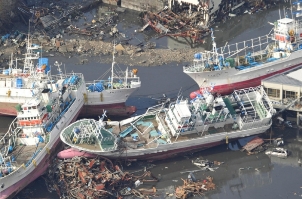Japanese earthquake aftermath claimed 4.37 million chickens

At least 4.37 million chickens being raised in Aomori, Iwate and Miyagi Prefectures of Japan died following the closure of ports after the earthquake and resulting tsunami last year.
Japan depends on imports for three quarters of its chicken feed, but the damage to the ports cut supplies to northeast Japan and the northern Kanto region, creating a shortage of eggs in eastern Japan.
In the earthquake disaster, breakwaters at import ports were broken, preventing ships from docking. Feed factories’ stores ran out, meaning northeast Japan and the northern Kanto region, which together produce around 20% of the country’s eggs, took a heavy blow.
According to the Ministry of Agriculture, Forestry and Fisheries, by the end of June, around 10% of the 39.61 million chickens being raised in Aomori, Iwate and Miyagi Prefectures had died. Adding in chickens in Fukushima Prefecture, which was heavily affected by the nuclear disaster, and non-reported deaths, there has been an estimate that around eight million chickens died.
According to the national agricultural cooperative Zen-noh, the volume of eggs brought into Tokyo in mid-March was 87% less than in the same period of the previous year.
Currently, the influence of rises in feed prices on egg prices in Japan is small, as improvements in efficiency and a strong yen have absorbed the impact. However, there are members of the egg-raising industry warning that they are near the limits of their ability to compensate for risen prices.
Japanese consumption of eggs is 325 a year per person, second only to Mexico. Of that, 96% is domestically produced, but counting in feed, on a calorie-basis the self-sufficiency rate for eggs is 10%. Associate professor Seiji Nobuoka of Tokyo University of Agriculture warns, “The earthquake disaster showed anew that the Achilles heel of Japan’s livestock industry is its dependence on imports for feed. In the long term, a price increase for eggs is unavoidable.”
Source: The Mainichi Daily News












